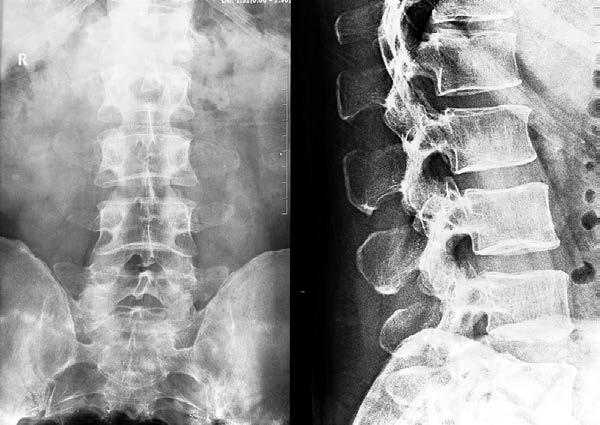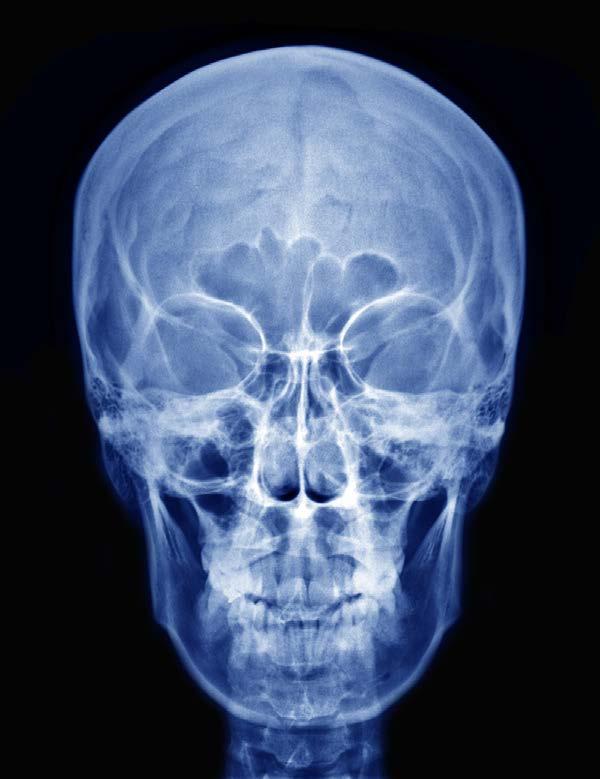
2 minute read
Elbow Plain Films
lesion. This is seen with posterior dislocations of the shoulder. They often need CT scan or MRI scanning in order to detect these.
The AC joint dislocation is seen on the AC image of the shoulder joint. If there is a dislocation of more than eight millimeters, this is representative of a significant subluxation. You may need to get an image of the opposite side in order to have a representation of what the normal AC joint looks like.
Advertisement
Osteoarthritis of the shoulder can be detected on x-ray. It can be a primary problem or secondary to a fracture or rotator cuff injury. There will be narrowing of the joint space from loss of cartilage, subchondral sclerosis with increased bone production, osteophyte formation, synovitis, and subchondral cysts.
Rotator cuff impingement is seen when the rotator cuff tendons have been pinched between areas of bone. The pain is anterior and lateral with abduction or lifting of the arm being the most painful. The impingement usually occurs between the top of the acromion and the humeral head. This can lead to weakness and degeneration of the tendons. The supraspinatus tendon is the most susceptible to this type of impingement. The plain film can be helpful because it can show calcifications of the tendon.
ELBOW PLAIN FILMS
This generally results in obtaining a standard AP and lateral image of the elbow, although a capitellum image can be done, which views the radial head. The AP image is done with the palm facing up, which is external rotation of the elbow. A good film takes one of the joint and a third each of the distal humerus and the proximal radius and ulna.
The lateral involves the shoulder at the same level as the elbow with the medial side of the patient’s arm in contact with the x-ray table. The palm faces the patient. The elbow is flexed to ninety degrees. The capitellum image is of the radial head for subtle fractures of this structure. The patient is positioned the same way as the lateral image with the image taken at a 45-degree angle to the x-ray table.
There are actually three separate joints in the elbow. The humeroulnar joint involves the olecranon of the ulna articulating with the humerus through its trochlea. The
radiohumeral joint is between the radial head and the humerus. It is involved with pronation and supination of the forearm. The proximal radioulnar joint is between the proximal radius and proximal ulna. It rotates the radial head.
On the lateral image, there are fat pads located posteriorly and anteriorly. These are located within the articular capsule and can be seen in cases of elbow fracture. Figure 11 shows a normal elbow x-ray.
https://www.shutterstock.com/image-photo/xray-view-elbow218095324?src=bgoiuSHHVIbjgZ9h1OxCNQ-1-2
Figure 11.
The elbow will not be developed in the child. There are six different ossification centers in the elbow that take up to 11 years to fully develop. The lateral epicondyle develops last of these major centers of ossification. These different areas of ossification make it difficult to assess the patient for fractures prior to the age of eleven years.
A radial head fracture can happen with a fall on the outstretched arm or a valgus stress on an abducted arm. These can be subtle fractures. There will be fat pad displacement in







